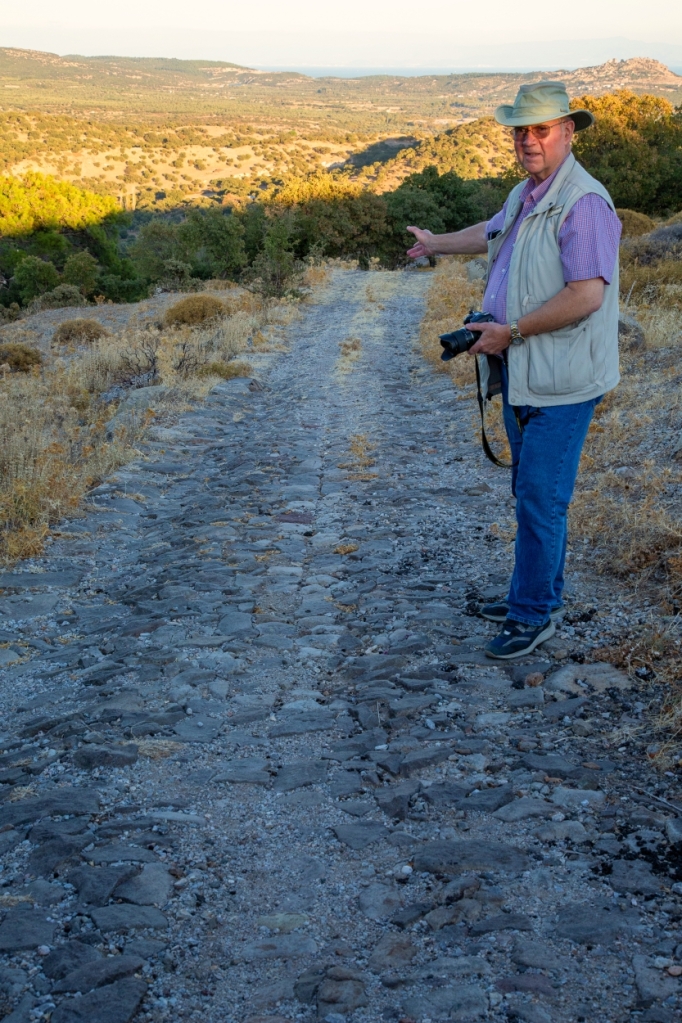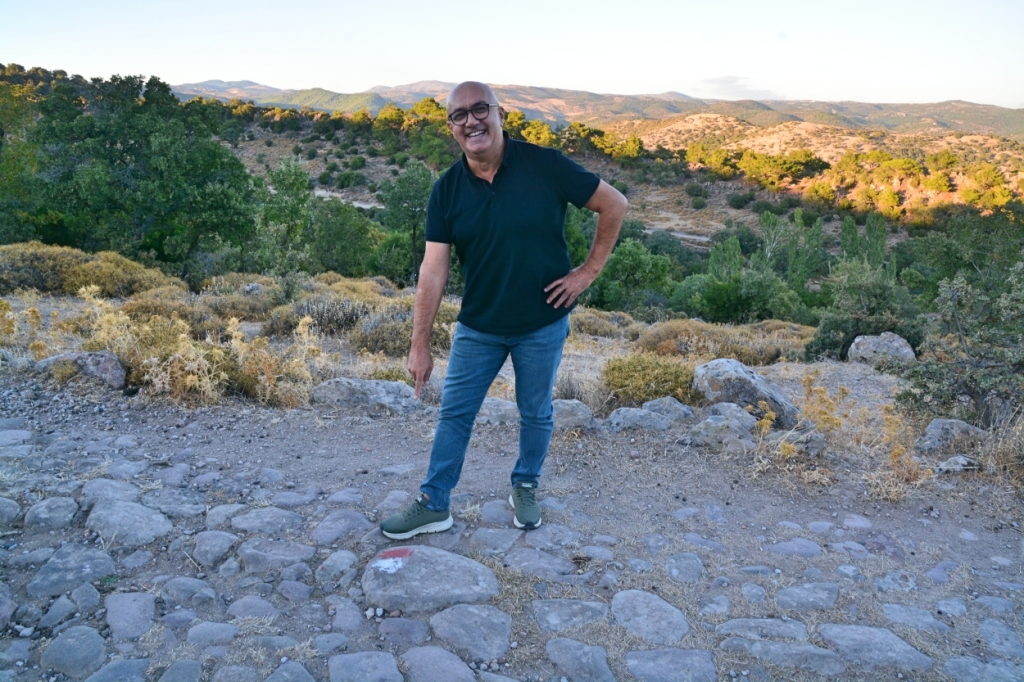In our previous post of September 28, I reported that our tour group (of 45 passengers) had arrived safely and were set to begin our Steps of Paul and John Tour. We had a great tour, visiting sites from southern to northern Greece, then crossing the Dardanelles and exploring Troas, Assos, the cities of the Seven Churches, also Colossae and Hierapolis, and finally concluding in Istanbul.
I had intentions of making posts in this blog during the tour, but due to several factors, it turned out to be more workable to use my Facebook account and make posts on my phone. But now that we are back in the states we plan to report on the tour on this site. In upcoming posts I want to begin at Corinth, and basically follow our itinerary with appropriate posts. In this post however, I want to “fast-forward” to Assos, and look at the wonderful Roman road there which we were able to see for the first time. But first, a group photo taken at Thessaloniki, Greece. The famous White Tower is in the background.

The Road from Troas to Assos.
Assos is only mentioned on one occasion in Scripture. On Paul’s return trip on his 3rd Missionary Journey, after departing from Troas, he walked on to Assos and rejoined his traveling companions there. Paul had preached all night, only stopping at midnight when Eutychus fell from the 3rd floor, and was taken up dead. Paul raised him from the dead. Acts 20 continues the narrative:
11 Now when he [Paul] had come up, had broken bread and eaten, and talked a long while, even till daybreak, he departed. 12 And they brought the young man [Eutychus] in alive, and they were not a little comforted. 13 Then we went ahead to the ship and sailed to Assos, there intending to take Paul on board; for so he had given orders, intending himself to go on foot. 14 And when he met us at Assos, we took him on board and came to Mitylene (Acts 20:11-14).
Paul purposefully traveled overland by himself, and then rejoined his traveling companions on the ship at Assos. The route over land was 31 miles! Luke does not supply the reason why Paul chose to leave the group and travel overland to Assos. A statement Paul made in the larger context of our passage may be helpful: “And see, now I go bound in the spirit to Jerusalem, not knowing the things that will happen to me there, except that the Holy Spirit testifies in every city, saying that chains and tribulations await me” (Acts 20:22-23).
Though not knowing the details, Paul knew that his freedom would soon be taken away, that he was about to enter a period of confinement/imprisonment once he arrived at Jerusalem. On the ship there would be little if any opportunity to be alone. It would seem that those miles on his walk from Troas to Assos furnished time for deep thought and prayer. For sure it would be the final such opportunity before he became “Paul, the Prisoner” (from the point of his arrest in Jerusalem, Acts 21:26ff, until Acts concludes at 28:30-31, Paul will be a prisoner in chains).

In 2006, former professor Ferrell Jenkins and I made a personal study trip to western Turkey, including Assos and Troas. It was not until then that I “connected the dots” and saw what would have been involved in that two day journey by land. Later, Dr. Carl Rasmussen posted photos of the well-preserved road connecting Troas and Assos: https://holylandphotos.org/browse.asp?s=1,3,7,20,55&img=TWNAAS24. More recently, Dr. Meg Ramey featured this road in an article in BAR, November/December 2019 issue. She reported that “Turkey’s Ministry of Culture and Tourism has caught the vision for preserving and promoting this sacred way.” See https://www.troycultureroute.com/route/.
In short, more than two years ago, when I was putting together the itinerary for this trip, I wanted to include a walk on this road if at all possible. I asked Orhan, who has served as our guide before, to help me with this. He had never seen this little known road, but promised he would make it happen. Because of the pandemic, our trip which was originally scheduled spring ’20, was rescheduled for fall ’20, and then again for the dates of September 27 – October 8, 2021. So finally (Oct 3) the time had come to be on the road to Assos. The group did not know the “surprise” that I had planned for them, but all seemed very pleased!

Here is a closer view:

Our guide Orhan was delighted to learn of this road. Here he is pointing out markings indicating this road as part of the Paul Trail in this area.


Here is a map of the area:

I have posted previously on Assos here and here.
Dr. Mark Wilson has said that Assos is one of his top 10 favorite places in Turkey to visit. I have to agree!
Click images for larger view.
.



 Posted by Leon Mauldin
Posted by Leon Mauldin 













